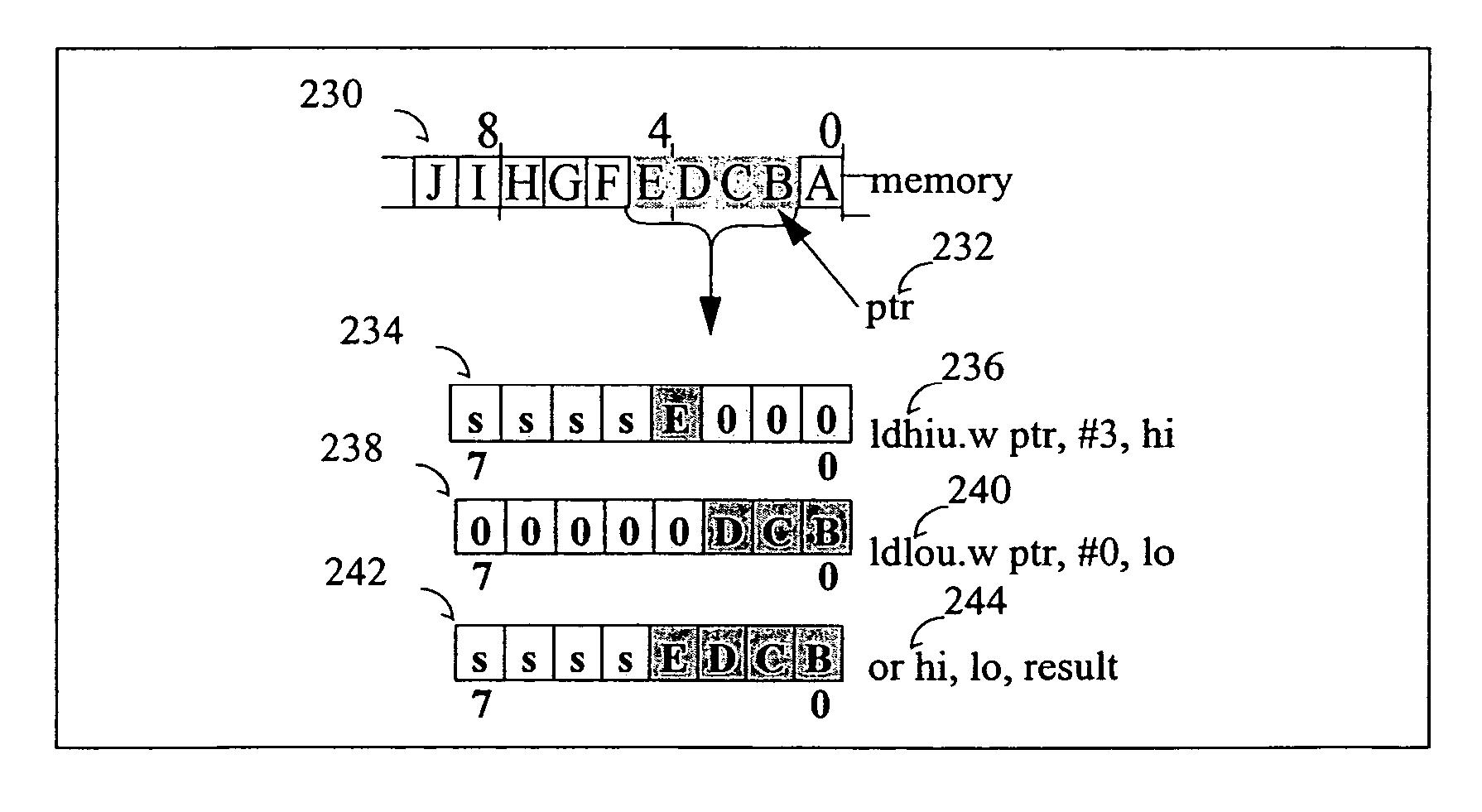Aligning load/store data using rotate, mask, zero/sign-extend and or operation
a technology of load/store data and rotation, applied in the direction of memory address/allocation/relocation, computation using denominational number representation, instruments, etc., can solve the problems of reducing the performance of prior art risk devices, producing unaligned reference, and reducing the performance of unaligned referen
- Summary
- Abstract
- Description
- Claims
- Application Information
AI Technical Summary
Benefits of technology
Problems solved by technology
Method used
Image
Examples
Embodiment Construction
[0030]The invention relates broadly to moving data in a microprocessor or microcontroller to and from memory, and particularly to loading and storing unaligned memory references.
[0031]FIG. 3 illustrates a specific embodiment showing a load of an unaligned data word from memory to a register of the present invention. In FIG. 3, memory 100 shows the four desired data bytes, D4, D3, D2, and D1 that are to be moved into register R 110. A pointer 150 gives the address of the lowest byte D1, i.e., the address equals 6 in memory 100′ (which is the same as memory 100 in FIG. 2). The memory 100′ word boundary 152 is between addresses 3 and 4. D4 as the lower byte of the word from addresses 0-3 in memory 100′, is loaded into register A 124 at location PA1, and then rotated right one byte to give its new position PA4 in register A 124 in FIG. 3. Bytes to the right of D4 have been zero masked so that locations PA3 down to PA1 contains 0. Similarly, bytes D3, D2 and D1 in memory 100′ are loaded ...
PUM
 Login to View More
Login to View More Abstract
Description
Claims
Application Information
 Login to View More
Login to View More - R&D
- Intellectual Property
- Life Sciences
- Materials
- Tech Scout
- Unparalleled Data Quality
- Higher Quality Content
- 60% Fewer Hallucinations
Browse by: Latest US Patents, China's latest patents, Technical Efficacy Thesaurus, Application Domain, Technology Topic, Popular Technical Reports.
© 2025 PatSnap. All rights reserved.Legal|Privacy policy|Modern Slavery Act Transparency Statement|Sitemap|About US| Contact US: help@patsnap.com



